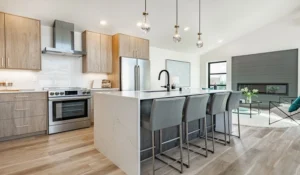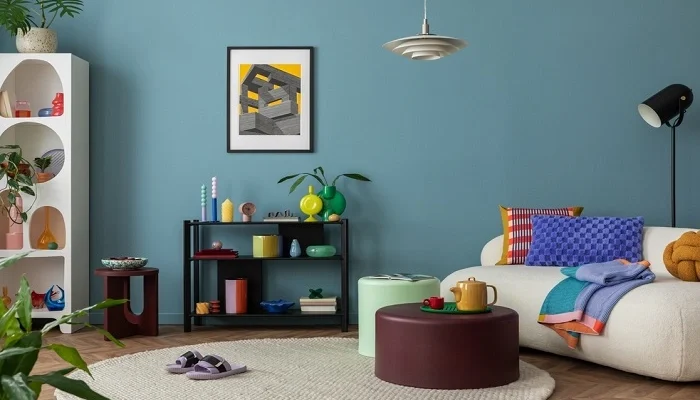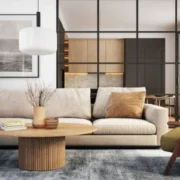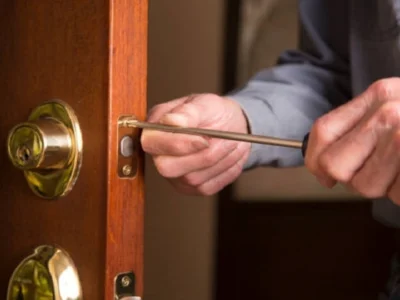Home design trends are constantly changing and have transformed completely over the years. In the past, home design focused purely on aesthetics and making a home look stylish. However, now there has been a shift in creating a beautiful home that serves a purpose. It blends comfort and aesthetics to create a functional home that works for you. Plus, with the cost of living always increasing, trends for home design are now all about balancing luxury with budget-friendly fixes. This allows everyone, no matter their financial situation, to add lavish, homely touches that transform their haven.
With homeowners becoming more aware of home design due to the vast information that is accessible, interior design trends are starting to factor in DIY projects for people to transform their homes themselves- without breaking the bank. From smart storage solutions to multi-functional spaces, affordability no longer means sacrificing luxury. Instead, home design is more affordable than ever, giving you the chance to customise your home to your liking without the high-end price tag.
Multi-Functional Spaces
Modern-day living has dramatically changed very recently, causing a need for adaptable homes. This is due to the popularity of remote working and hybrid schedules, where people have had to find a space in their home dedicated to work. However, with this came a struggle to keep home and work life separate. This is where multi-functional spaces come in for home design. It’s a trend that gives rooms multiple purposes rather than just one purpose. A dining area can now double as a workspace, and a guest bedroom can be a room to do your hobbies. This dramatic shift in home design has created demand for adaptable rooms, which need multi-functional furniture and a layout to give you flexibility. Having these allows you to quickly transform rooms to suit your needs at various times throughout the day. It also creates distinct barriers between home life and work life- letting you switch off from work when the day is done.
The open-plan concept is still popular, but it’s evolving. Homeowners are turning to clever zoning techniques—like modular shelving, freestanding panels, or layered lighting—to create subtle divisions without sacrificing the airy, communal feel. It’s all about making the most of what you have while maintaining a sense of flow and cohesion.
Natural Tones and Textures
Natural tones and textures are still a largely popular trend in home design, integrating nature to breathe life into your home. Earthy palettes and raw materials are being used to transform spaces into tranquil areas where you can fully unwind. Think soft beiges, olive greens, and warm terracottas paired with organic textures like linen, rattan, and unfinished wood. These tones evoke a sense of calm and comfort, making the home feel like a true sanctuary.
As well as this, it’s becoming more common to turn to sustainable materials that are long-lasting. This is because we are more eco-conscious as consumers and want to protect the environment in any way we can. Plus, even though sustainability can initially cost more, these materials are built to last- providing you with affordability over time. Materials like recycled wood, bamboo, and stone substitutes that mimic the look and feel of natural stone are being integrated into homes. These are a great way to stay environmentally friendly while also being less expensive than the real thing!
Affordable Lavish Bespoke Furniture
Being able to customise the interior of your home has always felt unachievable. This is due to customisation being a high-end luxury that comes with an expensive price tag. However, now creating bespoke furniture and interiors is achievable on a budget, no longer only for those who can afford lavish designs. There is growing access to cost-effective services and materials, which allows you to design your space how you want. You can easily reflect your personal style without splashing the cash. Whether you want to create a bespoke wardrobe or add tailored storage, customisation is something everybody can do.
As we are becoming more home design savvy, customisation can be done through DIY projects or using manufacturing services, as these have both become more affordable over time. There are also affordable materials that can be used, making bespoke furniture and pieces in the home much cheaper and no longer a luxury. Materials such as MFC cut to size allows everyone to make custom shelving, furniture and cabinetry that suit specific spaces and requirements.

Minimalism and Functionality
Minimalism has become an increasingly popular trend in home design because it creates a clean, organized aesthetic. However, it has transformed past just being bare white walls and empty corners. Minimalism is now warm and full of character. Clean lines are balanced with soft furnishings, subtle patterns, and natural textures. The focus is on removing clutter, not personality.
This approach prioritizes calm and clarity, but not at the expense of comfort. Carefully chosen pieces serve both aesthetic and practical functions, and every element in the room has a purpose. The key lies in thoughtful curation—less, but better.
Smart Homes and Tech Integration
As technology has advanced, homeowners have utilized it in their homes. Technology has begun the convenient trend of smart homes that aim to make daily living that little bit easier. Creating a smart home is no longer something exclusive as the technology has become more accessible. However, the focus with smart homes has become about integrating technology as discreetly as possible. Many homeowners are choosing tech solutions that serve a purpose and are subtle- keeping a clean and organized environment while benefitting from technology in the home. Getting clever with technology, such as using wall-mounted speakers that blend with the décor, gives a stunning touch to any interior and provides you with functionality. You can also integrate smart lighting with beautiful fittings and hidden charging stations.
Rather than designing around the tech, you should make technology work within the design, ensuring that it adds to the atmosphere, not distracts from it. This means that aesthetics and innovation can now go hand in hand.
Bringing the Outdoors In
Adding elements of nature is another popular design trend because nature not only breathes life into the décor, but also brings many health benefits. This is because plants and greenery help to clean the indoor air, making it fresher and healthier to breathe in. Greenery can be added by elegant hanging planters and various indoor plants of different sizes around the home. It is best to choose easy-to-care-for plants to maintain their health and a stunning, healthy home. Another popular design trend to bring the outdoors in is living walls. These add a unique element to your home’s interior, adding texture and lots of vibrant nature into your home. A living wall can stand out and make a statement, while giving you all the benefits.
Greenery also creates a calming atmosphere, and many homeowners take this a step further to create their peaceful haven. They have begun to use sliding doors and large windows to bring their outdoor surroundings into their home. This creates a tranquil environment that boosts mood and calms you.
Style That Works for You
The most exciting thing about today’s home design trends is their accessibility. It’s no longer necessary to choose between style and function, or between elegance and affordability. With the right approach, homeowners can create spaces that reflect their taste, support their daily routines, and stay within budget.
Choice Home Warranty George Foreman in 2025










Comments